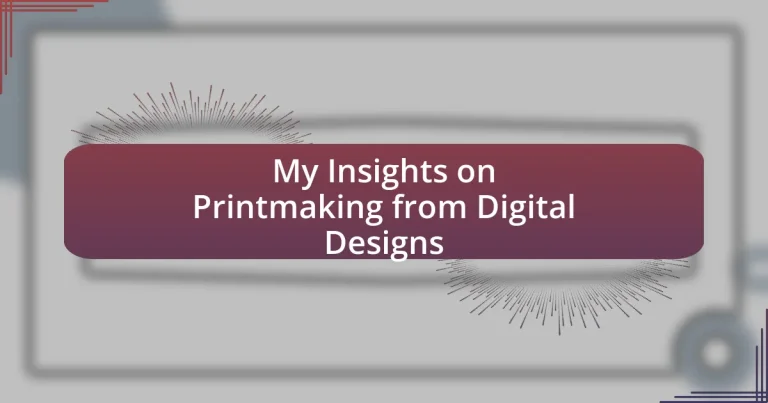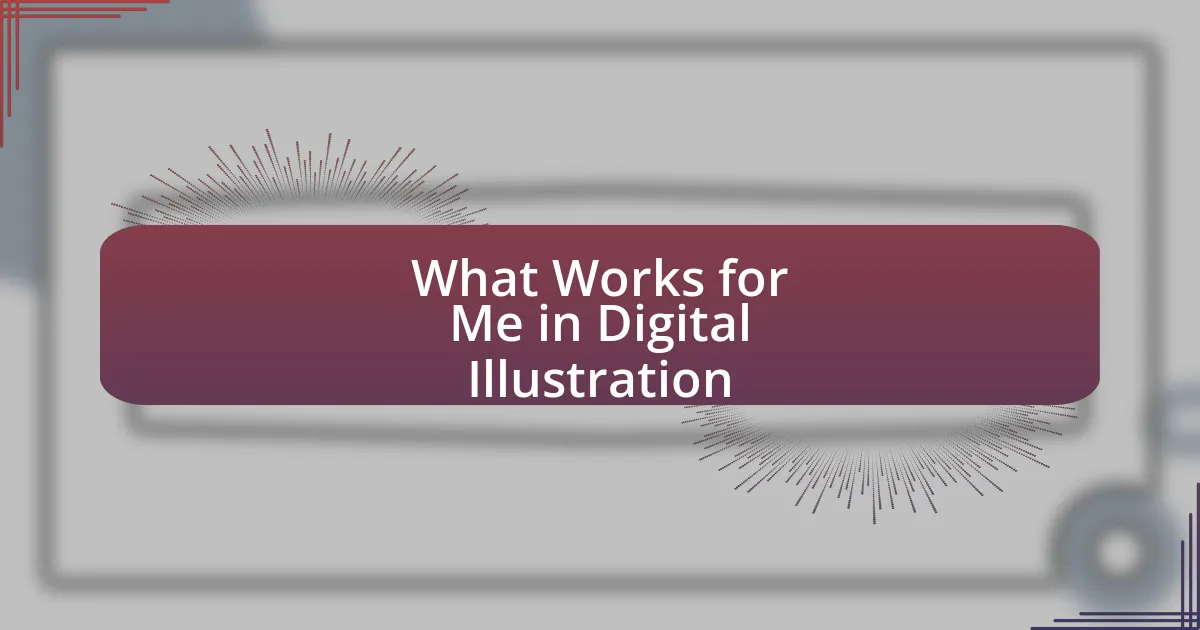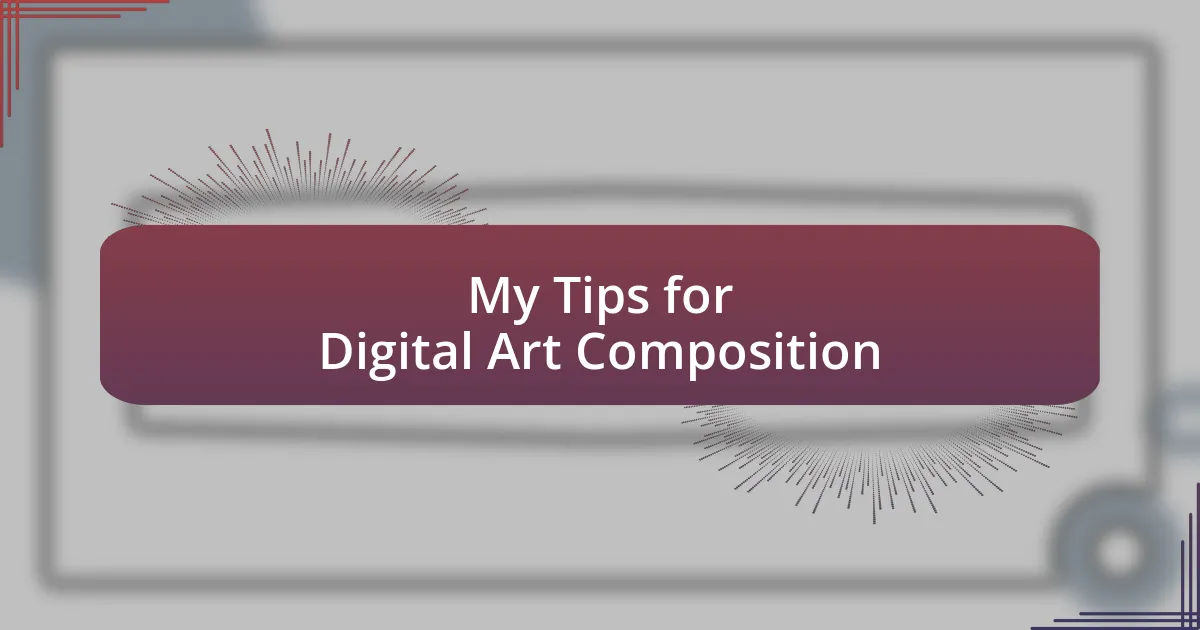Key takeaways:
- Printmaking techniques like linocut and lithography offer unique creative expressions, each requiring different skills and approaches.
- Combining digital and traditional printmaking enhances flexibility, creativity, and efficiency, leading to captivating aesthetics and a wider audience.
- Choosing the right materials, including paper and ink, is crucial for achieving desired print quality and can significantly impact the final result.
- Preparing high-resolution files and calibrating equipment are essential steps to ensure color accuracy and overall print quality.
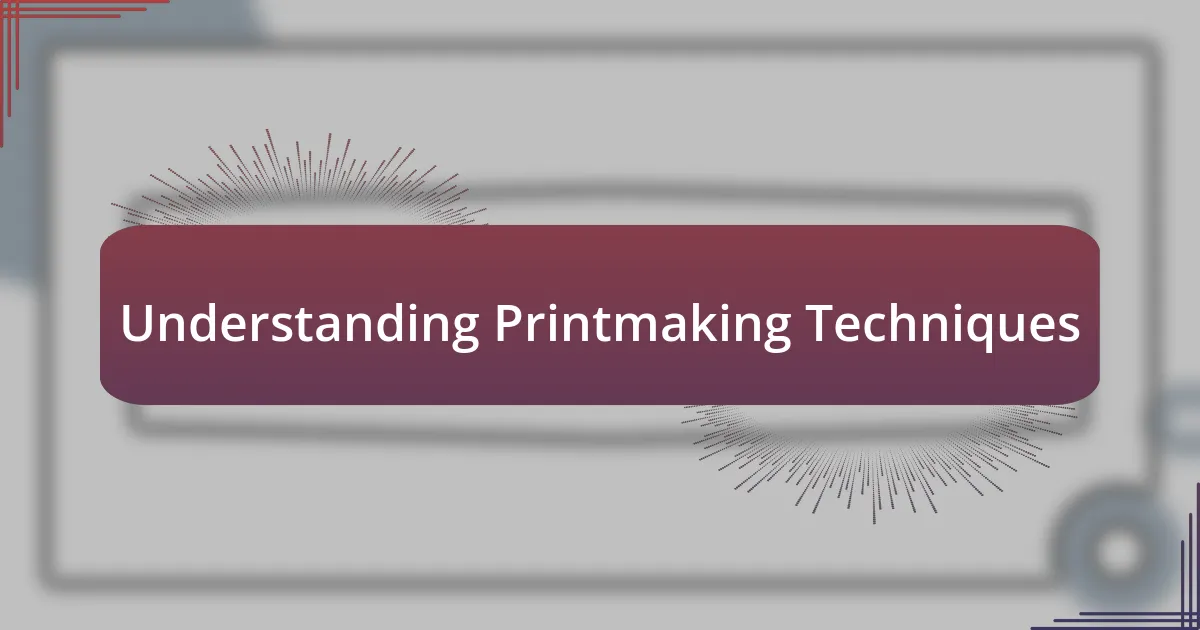
Understanding Printmaking Techniques
Printmaking encompasses various techniques, each with its unique charm and complexity. From screen printing to etching, I’ve found that every method has its strengths and weaknesses, allowing for a diverse range of creative expression. Have you ever tried getting your hands dirty with ink and paint? It’s an exhilarating experience that makes you appreciate the artistry behind each print.
One technique that stands out to me is linocut, where the tactile sensation of carving into linoleum brings a certain joy. As I carve, there’s a meditative quality that emerges, making me feel connected to the age-old tradition of printmaking. It’s fascinating how a simple design can translate into a series of prints, each with its own character, influenced by the pressure of the press or the variations in ink application.
Additionally, I always marvel at the intricacies involved in lithography. The way the images are formed on the stone, requiring both skill and precision, always amazes me. It’s like writing a love letter to the medium itself. How many times have I had to adjust my approach mid-process when a print doesn’t turn out as I envisioned? Each misstep is a lesson, a chance to refine my technique and embrace the unexpected.
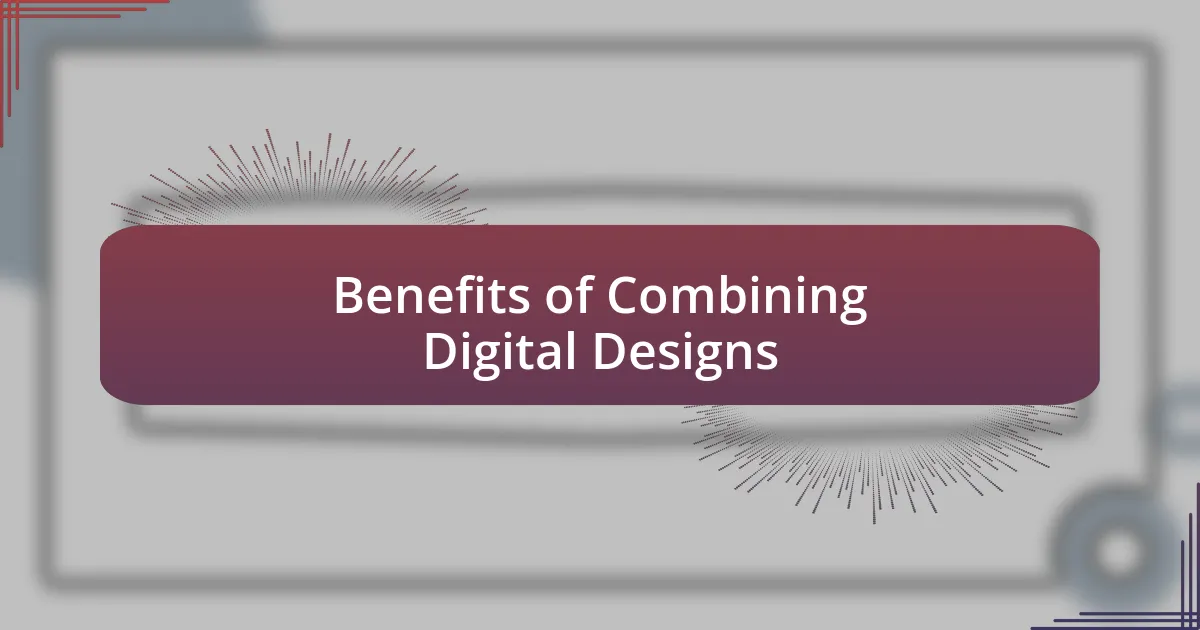
Benefits of Combining Digital Designs
Combining digital designs with traditional printmaking techniques opens a door to a world of possibilities. I recall a recent project where I merged a digital illustration with my linocut style. The result was breathtaking—the sharp clarity of digital graphics paired with the rich textures of hand-carved linoleum created a unique aesthetic. This blend not only allows for increased creativity but also encourages experimentation, leading to unexpected and exciting outcomes.
Here are some benefits of combining digital designs with printmaking:
- Enhanced Flexibility: Digital designs allow for easy modifications, from colors to layout, before committing to print.
- Broader Range of Effects: By integrating digital images, I can achieve blends and layers that might be difficult to replicate with traditional methods alone.
- Time Efficiency: Digital tools streamline the design process, allowing me more time to focus on the hands-on aspects of printmaking.
- Unique Aesthetics: The contrasting qualities of digital and traditional prints can produce captivating variations that engage viewers.
- Wider Audience Reach: Digital designs can be easily shared online, helping to attract a broader audience for my prints.
Through this combination, I’ve found not just new techniques, but a deeper appreciation for both worlds. The fusion elevates my work, making it more dynamic and engaging.
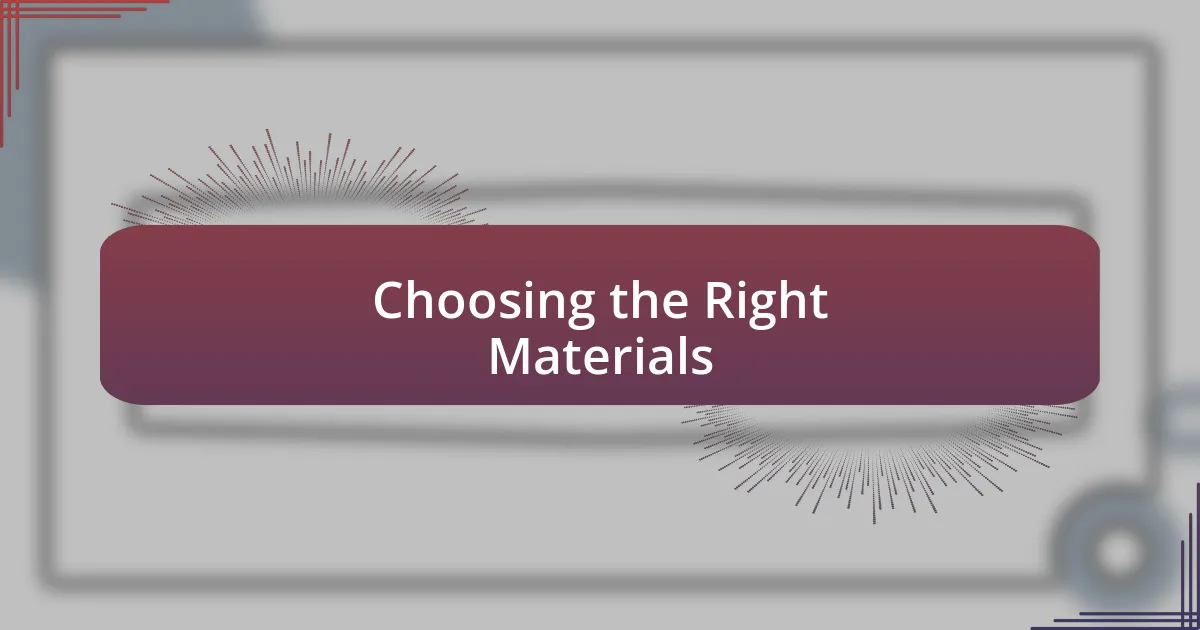
Choosing the Right Materials
Choosing the right materials is crucial in printmaking, especially when integrating digital designs. I remember how my first attempt at creating a piece with digital transfers led me to experiment with various papers. The choice of paper not only influenced the final look but also affected how the ink adhered and how vibrant the colors appeared. It was a learning moment that solidified my understanding of how materials can make or break a project.
Then there’s the type of ink. In my experience, traditional oil-based inks yield rich, saturated colors, while water-based inks offer easier cleanup without sacrificing quality. Each ink type brings its own character to the print, influencing texture and depth. I encourage you to test different inks—what works for one project may not be suitable for another, so don’t be afraid to mix and match until you find the perfect fit.
Lastly, consider your tools. I’ve encountered tools that were marketed as “must-haves” that didn’t suit my style at all. I’ve found my own favorites, like a soft brayer for ink application, which gives me more control over the texture I want to achieve. The right tools can truly transform your process and lend a distinct finish to your pieces.
| Material | Description |
|---|---|
| Paper | Choose based on weight, texture, and absorbency to match your ink type. |
| Ink | Select between oil-based for richness and water-based for convenience. |
| Tools | Invest in tools that enhance your technique and comfort. |
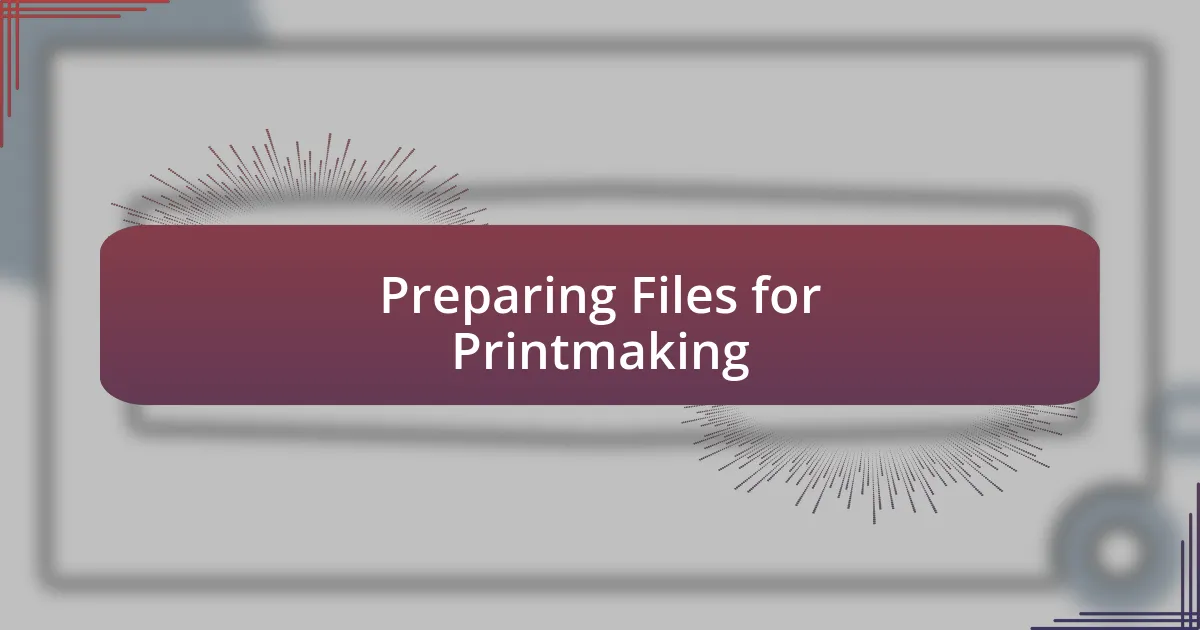
Preparing Files for Printmaking
Preparing files for printmaking involves a careful balance of technical precision and creative expression. When I first transitioned from digital design to print, I was amazed by the need for high-resolution files. It dawned on me just how crucial resolution is; a low-quality image can ruin a print’s potential. Have you ever had your designs look crisp on screen, only to be disappointed by the fuzzy outcome in print? Trust me, it’s a heart-sinking moment.
I’ve learned that understanding color profiles plays a key role in achieving true-to-life prints. Working in RGB mode on a digital platform often misrepresents how colors will appear when printed, which can lead to unexpected results. Making that switch to CMYK early in the design process has helped me prevent surprises and maintain color integrity. Do your designs often stray from what you envision? This simple adjustment can really bridge that gap.
Once your files are ready, consider the file format. I used to send everything as a JPEG, but I found that saving as a TIFF or PDF retained more detail and allowed for better quality during printing. This may seem trivial, but it can significantly impact the outcome. Remember, every detail counts in printmaking, so take a moment to ensure your files are set up to represent your artistic vision perfectly.
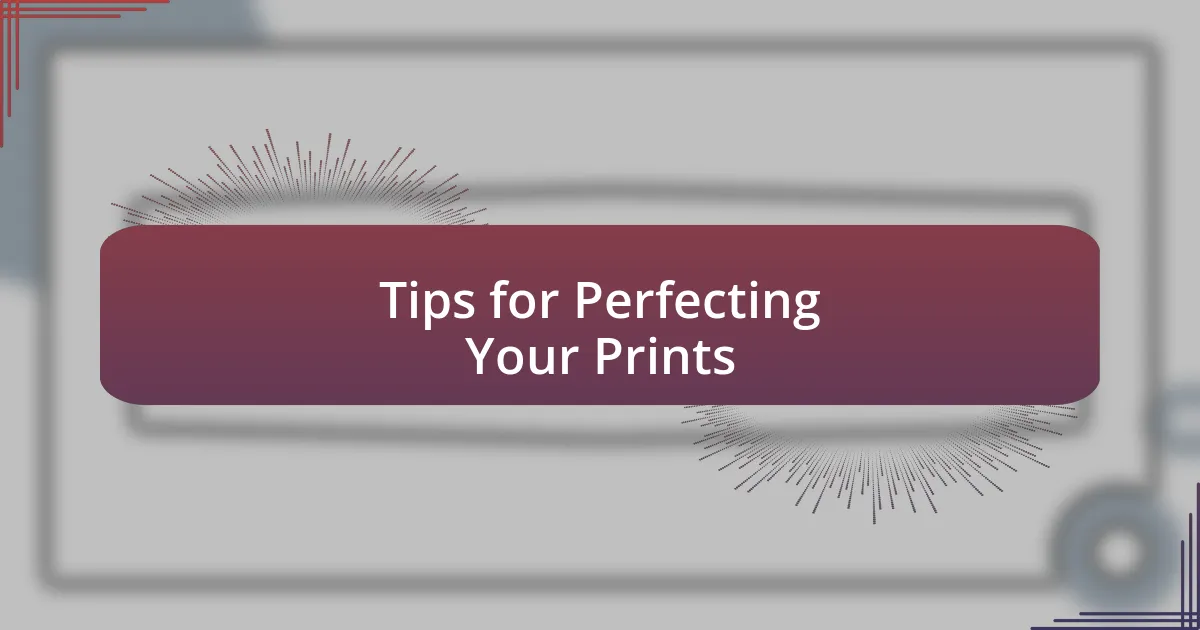
Tips for Perfecting Your Prints
When it comes to perfecting your prints, calibration is absolutely essential. I recall the first time I printed a series of designs without properly calibrating my monitor. The prints turned out much darker than I anticipated, which left me feeling frustrated. It’s one of those lessons that sticks with you—always ensure your monitor settings match the type of paper you’re using. Have you checked your calibration recently? A few minor adjustments can make all the difference.
Another key tip I’ve picked up is to test print. It might seem like an extra step, but trust me, it’s worth it. I remember the excitement of seeing my designs come to life, only to discover a small detail was off. That test run can reveal unexpected issues, whether it’s color bleed or alignment problems. Wouldn’t you rather catch those mistakes before having a whole batch of prints? A quick print check can save you from a lot of heartache later.
Finally, remember to embrace experimentation. Each printing session is a learning opportunity in itself. I once played around with different papers and found that some textures brought out elements of my design I never considered. Have you explored how varying your materials can elevate your prints? It’s moments like these where creativity and technique intersect, leading to surprising and delightful results.

Common Challenges and Solutions
Every printmaker faces challenges, and one that often creeps in is the issue of color consistency. I remember the frustration of getting a vibrant blue on my screen, only to see it dull and lifeless on paper. What I’ve learned is to always create a color profile for your printer and paper combination. This simple yet effective solution can bridge the gap between your digital design and the printed outcome. Have you considered this step before printing? It could save you a lot of disappointment.
Another challenge that frequently arises is the technical flaws such as banding or unexpected texture issues. These can be disheartening, especially when you’ve put so much effort into your designs. I once had a batch of prints marred by subtle lines ruining the overall effect. A little troubleshooting revealed that cleaning the printer heads and ensuring I was using the right ink made all the difference. Have you kept up with your printer’s maintenance? It’s often the key to achieving that flawless finish.
Lastly, let’s talk about the economy of materials. I recall trying to cut costs by opting for lower-quality paper, hoping to save a little without sacrificing quality. The end result was a disappointing, lackluster print that didn’t do my work justice. I’ve since realized investing in high-quality materials pays off in the long run. Isn’t it better to put your best foot forward with your art? Quality materials can enhance your designs significantly and merit your hard work.

